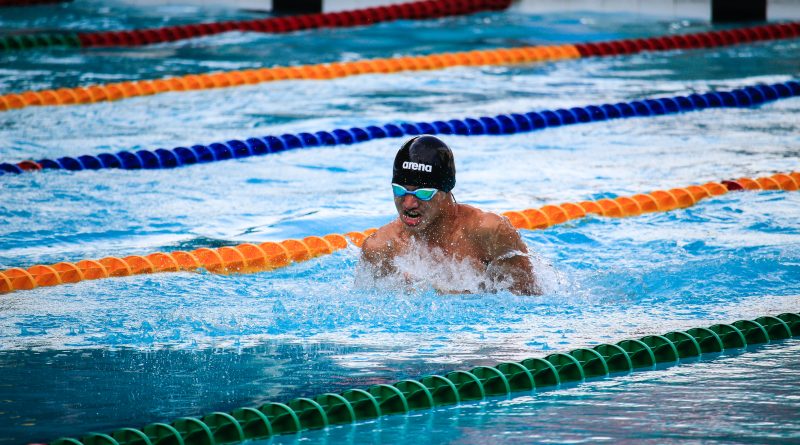Technical aids and accessories of swimming
Because a sense of ease in the water is so essential to the art of swimming, equipment that helps to promote this is a worthwhile investment. Adults who have difficulty putting their face in the water for any length of time can find good-quality swimming accessories invaluable. As the majority of swimming pools use chlorine as a disinfectant (and even lakes and oceans may contain eye irritants), the eyes are likely to sting if they stay open underwater for long periods. To help prevent this, there’s no substitute for a pair of good, well-fitting goggles. Without them, many swimmers will prefer to close their eyes the majority of the time. This not only increases the risk of bumping into things such as walls, lane ropes, and other swimmers, but more importantly, it contributes to a feeling of nervousness and of being in an alien environment. This is particularly true for swimmers who have poor eyesight, to begin with. Straining one’s eyes to see the end of a pool or to avoid obstacles is not conducive to feeling at home in the water.
For some swimmers, goggles feel uncomfortably tight or constricting and seem to leak and fog up constantly. In the box below are suggestions for ways of overcoming such concerns. Today there are hundreds of different makes of goggles on the market, and it’s worth getting a pair that offers maximum effectiveness with minimum discomfort. If necessary, they can be ordered with lenses made to your prescription. Overleaf are some points worth noting about goggles.
Apart from goggles, a number of accessories are widely available to help swimmers deal with their concerns. It’s worth considering anything that serves to prevent distraction, difficulty, or genuine discomfort. A swimming cap is a boon for swimmers with long hair and may be useful to prevent waterlogged hair from flopping over the eyes and mouth. Although you may have to accept that they are uncomfortable and not always totally effective in keeping the hair dry, their main purpose is to keep hair out of your face so that you can attend to your swimming. Watertight earplugs are helpful for swimmers prone to ear infections or who suffer earache when the head is underwater. However, they can add to a sense of isolation in the water.
Similarly, nose clips are not recommended unless you have specific sinus problems, because they’re likely to prevent you from learning the appropriate ways of breathing when you swim. For hair and skin, shampoos and gels are widely available to neutralize chemicals and remove the smell of chlorine.
For children (and sometimes for adults), floats and armbands are commonly used accessories. But it is worth pausing before assuming that these are helpful for learning to swim. Above all, they can interfere with learners developing a sense of their natural buoyancy, the keystone of confidence in the water. While they may sometimes be considered essential for safety requirements, they should therefore be used only sparingly, if at all, in the context of children learning to swim under proper instruction.


